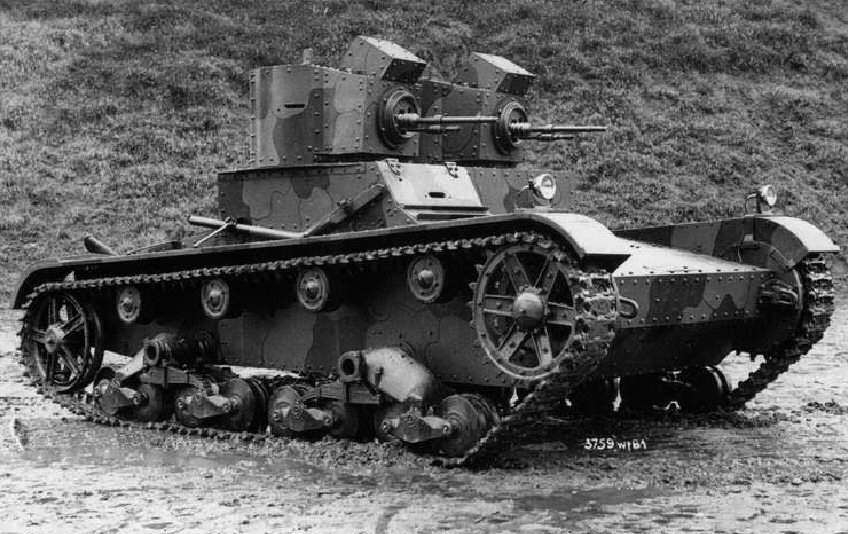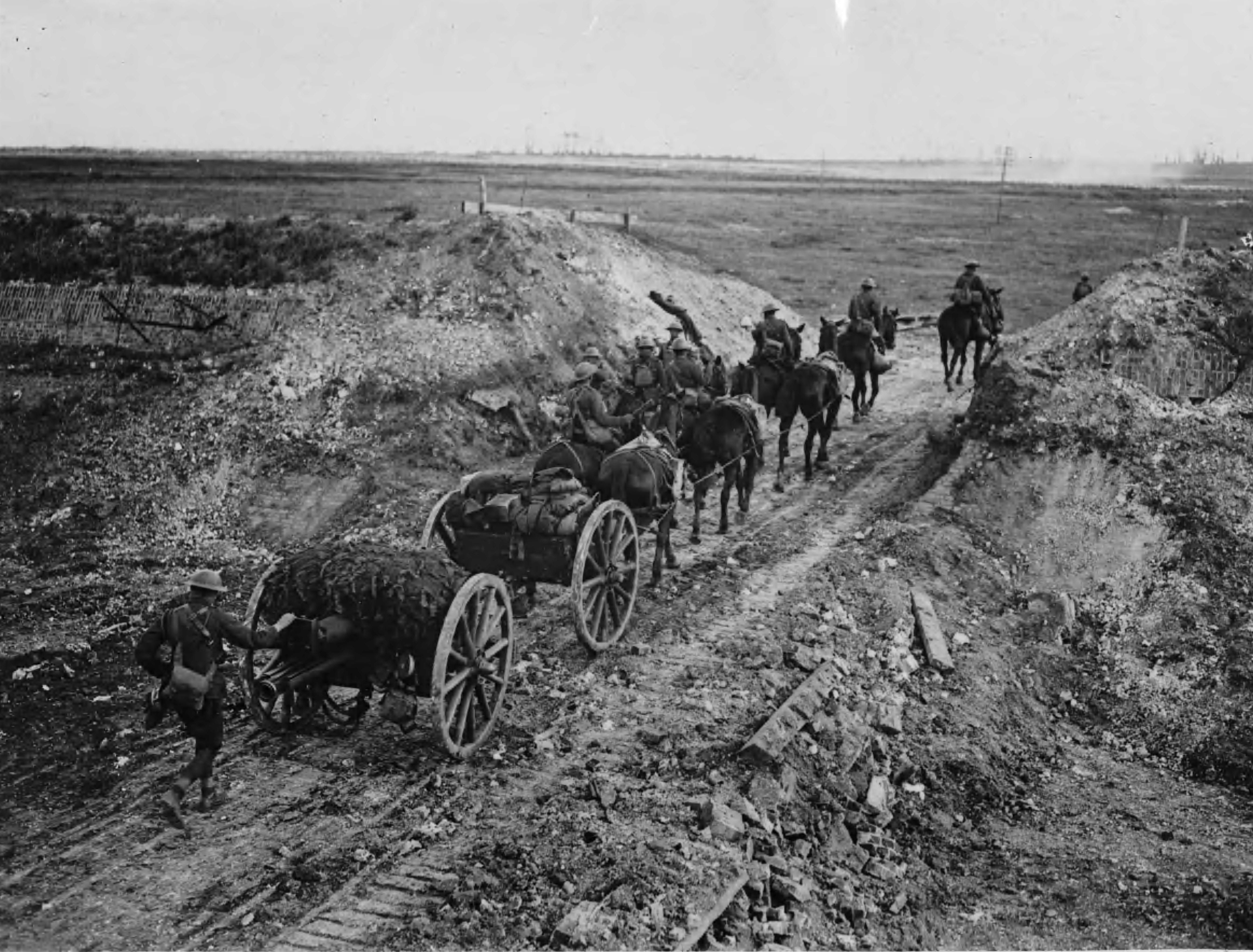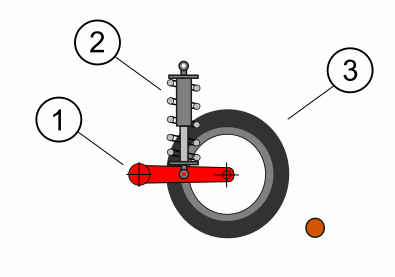|
Vickers E
The Vickers 6-ton tank or Vickers Mark E, also known as the "Six-tonner" was a British light tank designed as a private project at Vickers. It was not adopted by the British Army, but was picked up by many foreign armed forces. It was licensed by the Soviet Union as the T-26. It was also the direct predecessor of the Polish 7TP tank. History The first Mark E was built in 1928 by a design team that included the famed tank designers John Valentine Carden and Vivian Loyd. The hull was made of riveted steel plates, thick at the front and over most of the turrets, and about thick on the rear of the hull. The power was provided by an Armstrong Siddeley engine of (depending on the version), which gave it a top speed of on roads. The Horstmann suspension used two axles, each of which carried a two-wheel bogie to which a second set of bogies was connected with a leaf spring. Upward movement of either set of bogies would force the other down through the spring. This was considered ... [...More Info...] [...Related Items...] OR: [Wikipedia] [Google] [Baidu] |
Military Museum's Manege
The Military Museum of Finland ( fi, Sotamuseo) is the central museum of the Finnish Defence Forces and the national special museum of military history. It is located in Helsinki and it is part of the Finnish National Defence University. In 2018, the Military Museum's exhibitions in Suomenlinna had around 131,000 visitors. The most popular exhibition is the submarine Finnish submarine Vesikko, ''Vesikko'', visited by around 50,000 people annually. Military Museum's exhibitions in Suomenlinna are located at Military Museum's Manege, Manege and Artillery Maneage. The Military Museum's task is to collect, preserve, research and display artifacts and other heritage related to the development of the Defence Forces of Finland, Finland's military history and to the history of weaponry. As of 2016, the museum's exhibition locations at Liisankatu 1 and Maurinkatu 1 are closed. History The Military Museum was founded November 25, 1929. The opening ceremony followed on October 18, 1930, at ... [...More Info...] [...Related Items...] OR: [Wikipedia] [Google] [Baidu] |
Vickers Machine Gun
The Vickers machine gun or Vickers gun is a Water cooling, water-cooled .303 British (7.7 mm) machine gun produced by Vickers Limited, originally for the British Army. The gun was operated by a three-man crew but typically required more men to move and operate it: one fired, one fed the ammunition, the others helped to carry the weapon, its ammunition, and spare parts. It was in service from before the First World War until the 1960s, with air-cooled versions of it on many Allies of World War I, Allied World War I fighter aircraft. The weapon had a reputation for great solidity and reliability. Ian V. Hogg, in ''Weapons & War Machines'', describes an action that took place in August 1916, during which the British 100th Company of the Machine Gun Corps fired their ten Vickers guns to deliver sustained fire for twelve hours. Using 100 barrels, they fired a million rounds without breakdowns. "It was this absolute foolproof reliability which endeared the Vickers to every Britis ... [...More Info...] [...Related Items...] OR: [Wikipedia] [Google] [Baidu] |
Vickers Medium Dragon
The Vickers Medium Dragon was a fully-tracked British field artillery tractor made by Vickers (later Vickers-Armstrongs), produced in various versions from 1922 to 1937. The Medium Dragon towed a wide range of artillery, from 18-pounder field guns to BL 60-pounder heavy field guns. It was developed from the carrier version of a 'Tropical Tank' designed by Lt-Colonel Philip Johnson, using components from the running gear of the Vickers Medium Mark I tank. The Mark I–III versions were purchased and used in quantity by the British Army at the start of its mechanisation of the artillery during the inter-war period. The Mark IV version of the Medium Dragon was effectively a complete re-design, using the running gear from the Vickers 6-ton tank, neither of which were adopted by the British Army. The Army finally decided in 1935 to purchase only wheeled artillery tractors, and no more were sold in the UK, but the Medium Dragon Mark IV sold well in export versions up to 1937. From ... [...More Info...] [...Related Items...] OR: [Wikipedia] [Google] [Baidu] |
Siam
Thailand ( ), historically known as Siam () and officially the Kingdom of Thailand, is a country in Southeast Asia, located at the centre of the Mainland Southeast Asia, Indochinese Peninsula, spanning , with a population of almost 70 million. The country is Template:Borders of Thailand, bordered to the north by Myanmar and Laos, to the east by Laos and Cambodia, to the south by the Gulf of Thailand and Malaysia, and to the west by the Andaman Sea and the extremity of Myanmar. Thailand also shares maritime borders with Vietnam to the southeast, and Indonesia and India to the southwest. Bangkok is the nation's capital and largest city. Tai peoples migrated from southwestern China to mainland Southeast Asia from the 11th century. Greater India, Indianised kingdoms such as the Mon kingdoms, Mon, Khmer Empire and Monarchies of Malaysia, Malay states ruled the region, competing with Thai states such as the Kingdoms of Ngoenyang, Sukhothai Kingdom, Sukhothai, Lan Na and Ayuttha ... [...More Info...] [...Related Items...] OR: [Wikipedia] [Google] [Baidu] |
USSR
The Soviet Union,. officially the Union of Soviet Socialist Republics. (USSR),. was a transcontinental country that spanned much of Eurasia from 1922 to 1991. A flagship communist state, it was nominally a federal union of fifteen national republics; in practice, both its government and its economy were highly centralized until its final years. It was a one-party state governed by the Communist Party of the Soviet Union, with the city of Moscow serving as its capital as well as that of its largest and most populous republic: the Russian SFSR. Other major cities included Leningrad (Russian SFSR), Kiev ( Ukrainian SSR), Minsk ( Byelorussian SSR), Tashkent (Uzbek SSR), Alma-Ata (Kazakh SSR), and Novosibirsk (Russian SFSR). It was the largest country in the world, covering over and spanning eleven time zones. The country's roots lay in the October Revolution of 1917, when the Bolsheviks, under the leadership of Vladimir Lenin, overthrew the Russian Provisional Gove ... [...More Info...] [...Related Items...] OR: [Wikipedia] [Google] [Baidu] |
OQF 3-pounder Gun
The Ordnance QF 3 pounder 2 cwt gun was a 47 mm British tank gun based on the Ordnance QF 3 pounder Vickers naval gun, mounted on Vickers-built tanks in the 1920s and 1930s. The gun was produced in 31 calibre (59 inch) and 40 calibre (74 inch) versions. The weapon only fired a solid shot, and was stated in the requirements of the A6 series of Vickers Medium tanks to have the ability to penetrate the armour of contemporary hostile tanks at a range of 1000 yards. The Vickers Medium Mark I was equipped with the Ordnance Quick Firing 2cwt Mark I version of the weapon, whilst from the Vickers Medium Mark II the Mark II version of the 3-pounder was utilized. Even though other European countries still fielded similar weapons (e. g., Cannone da 47/32) at the start of the Second World War (and quite a few years into it), due to its comparatively low muzzle velocity the 3-pounder was considered obsolete by the war start by the British, with the Ordnance QF 2-pounder replacing it as the ... [...More Info...] [...Related Items...] OR: [Wikipedia] [Google] [Baidu] |
Christie Suspension
The Christie suspension is a suspension system developed by American engineer J. Walter Christie for his tank designs. It allowed considerably longer movement than conventional leaf spring systems then in common use, which allowed his tanks to have considerably greater cross-country speed. The system was first introduced on his M1928 design, and used on all of his designs until his death in 1944. History Christie advocated the use of lightweight tanks with long range and high speed, designed to penetrate enemy lines and attack their infrastructure and logistics capabilities. A major problem with tanks in World War I was tracked suspension failure. Christie's first tank design of 1919 could be driven on its wheels to get to the starting point and then the tracks fitted before it went into action. The US Tank Corps ordered a single tank from Christie's company based on this design. The tank, known as the M1919, was delivered in early 1921 and tested until Christie proposed ... [...More Info...] [...Related Items...] OR: [Wikipedia] [Google] [Baidu] |
Leaf Spring
A leaf spring is a simple form of spring commonly used for the suspension in wheeled vehicles. Originally called a ''laminated'' or ''carriage spring'', and sometimes referred to as a semi-elliptical spring, elliptical spring, or cart spring, it is one of the oldest forms of vehicle suspension. A leaf spring is one or more narrow, arc-shaped, thin plates which are attached to the axle and chassis in a way that allows the leaf spring to flex vertically in response to irregularities in the road surface. Lateral leaf springs are the most commonly used arrangement, running the length of the vehicle and mounted perpendicular to the wheel axle, but numerous examples of transverse leaf springs exist as well. Leaf springs can serve multiple suspension functions: location, springing, and to some extent damping as well, through interleaf friction. However, this friction is not well controlled, resulting in stiction and irregular suspension motions. For this reason, some manufacturers have ... [...More Info...] [...Related Items...] OR: [Wikipedia] [Google] [Baidu] |
Horstmann Suspension
Horstmann suspension, also known as Horstman, Vickers-Horstman and rarely Slow Motion, is a type of tracked suspension devised by British tank designer John Carden and worked into a production design by engineer Sidney Horstmann. First used on the A6E3 Medium Tank prototype in 1935, it proved far superior to previous suspensions from Vickers. It was widely used on World War II-era tank designs but in the post-war era was increasingly limited to British tanks as newer systems emerged in other countries. The last tank to use this basic mechanism was the Chieftain, designed in the late 1950s. Horstman Defence Systems remains a tank suspension specialist to this day. They make a range of systems based mostly on torsion systems with hydrodynamic damping. These are also referred to as "Horstman suspensions" although they have no details in common with their earlier designs. History Sidney Horstmann became interested in suspension designs in the 1920s as part of his efforts to imp ... [...More Info...] [...Related Items...] OR: [Wikipedia] [Google] [Baidu] |
T-26
The T-26 tank was a Soviet light tank used during many conflicts of the Interwar period and in World War II. It was a development of the British Vickers 6-Ton tank and was one of the most successful tank designs of the 1930s until its light armour became vulnerable to newer anti-tank guns.Franco, ''El Tanque de la Guerra Civil Española'', p. 74. It was produced in greater numbers than any other tank of the period, with more than 11,000 units manufactured. During the 1930s, the USSR developed 53 variants of the T-26, including flame-throwing tanks, combat engineer vehicles, remotely controlled tanks, self-propelled guns, artillery tractors, and armoured carriers. Twenty-three of these were series-produced, others were experimental models. The T-26 and BT were the main tanks of the Red Army's armoured forces during the interwar period. The T-26 was the most important tank of the Spanish Civil War and played a significant role during the Battle of Lake Khasan in 1938, as well ... [...More Info...] [...Related Items...] OR: [Wikipedia] [Google] [Baidu] |
British Army
The British Army is the principal land warfare force of the United Kingdom, a part of the British Armed Forces along with the Royal Navy and the Royal Air Force. , the British Army comprises 79,380 regular full-time personnel, 4,090 Gurkhas, and 28,330 volunteer reserve personnel. The modern British Army traces back to 1707, with antecedents in the English Army and Scots Army that were created during the Restoration in 1660. The term ''British Army'' was adopted in 1707 after the Acts of Union between England and Scotland. Members of the British Army swear allegiance to the monarch as their commander-in-chief, but the Bill of Rights of 1689 and Claim of Right Act 1689 require parliamentary consent for the Crown to maintain a peacetime standing army. Therefore, Parliament approves the army by passing an Armed Forces Act at least once every five years. The army is administered by the Ministry of Defence and commanded by the Chief of the General Staff. The Brit ... [...More Info...] [...Related Items...] OR: [Wikipedia] [Google] [Baidu] |
Vickers
Vickers was a British engineering company that existed from 1828 until 1999. It was formed in Sheffield as a steel foundry by Edward Vickers and his father-in-law, and soon became famous for casting church bells. The company went public in 1867, acquired more businesses, and began branching out into military hardware and shipbuilding. In 1911, the company expanded into aircraft manufacturer, aircraft manufacture and opened a flying school. They expanded even further into electrical and railway manufacturing, and in 1928 acquired an interest in the Supermarine. Beginning in the 1960s, various parts of the company were nationalised, and in 1999 the rest of the company was acquired by Rolls-Royce Holdings, Rolls-Royce plc, who sold the defence arm to Alvis plc. The Vickers name lived on in Alvis Vickers, until the latter was acquired by BAE Systems in 2004 to form BAE Systems Platforms & Services, BAE Systems Land Systems. History Early history Vickers was formed in Sheffield ... [...More Info...] [...Related Items...] OR: [Wikipedia] [Google] [Baidu] |

.jpg)


.jpg)


